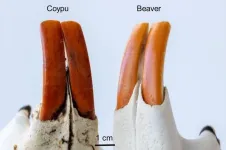(Press-News.org) Waltham — April 10, 2024 — The nursing work environment, nurse education, and staffing levels are independent factors affecting hospital scores on a key measure of patient-centered care – with significant implications for reimbursements, reports a study in Medical Care. The journal is published in the Lippincott portfolio by Wolters Kluwer.
"Our results provide evidence-based guidance about which modifiable aspects of hospital nursing are likely to improve patient experience ratings," said Kathleen E. Fitzpatrick Rosenbaum, PhD, RN, CCRN, of Yale University.
How do nursing factors affect HCAHPS scores?
The researchers analyzed Hospital Consumer Assessment of Healthcare Providers and Systems (HCAHPS) scores for 540 hospitals in four states (California, Florida, New Jersey, and Pennsylvania) for the year 2016. Developed by the US Centers for Medicare & Medicaid Services, the HCAHPS survey assesses patient experiences of hospital care, with the goal of determining the extent of patient-centered care.
Because patient experience ratings affect Medicare reimbursement levels, "hospital executives are motivated to identify levers for improving HCAHPS scores," the researchers write. However, there is "minimal evidence" about what organizational strategies hospitals can follow to improve their HCAHPS ratings. Research has shown that organizational resources related to nursing care are associated with better patient outcomes.
Using data on a wide range of hospital characteristics, the study focused on the relationships between HCAHPS ratings and four categories of hospital nursing resources:
Education – percentage of nurses with a bachelor's degree or higher
Skill mix – proportion of registered nurses to total nursing staff
Staffing – patient-to-nurse ratio
Work environment – nurse ratings of the quality of their work environment
'Evidence-based guidance' on nursing resources to improve patient experience
The average "top box" (overall) HCAHPS rating was 68%. Scores ranged from about 76% for hospitals in the highest HCAHPS category to 60% in the lowest category. Large, non-teaching hospitals with high technology capabilities tended to have the highest HCAHPS scores.
After adjustment for hospital characteristics, the factor most strongly related to HCAHPS ratings was work environment. For each standard-deviation increase in work environment score, hospitals were more than twice as likely (odds ratio 2.42) to be in a higher patient experience performance category.
Nurse education and staffing showed significant but weaker associations with HCAHPS scores, while nursing skill mix was not a significant factor. Within the work environment category, staff development/continuing education and nurse participation in hospital affairs seemed to have the greatest impact on HCAHPS scores. “Our findings enhance three decades of evidence generated by the Center for Health Outcomes and Policy Research at the University of Pennsylvania, where the research was conducted, revealing the potential to improve patient outcomes by providing optimal settings for professional nurses,” remarked senior author Eileen Lake, PhD, RN.
"Improving nursing resources is a strategic organizational intervention likely to improve
HCAHPS ratings," the researchers write. While work environment is the single most important factor, previous studies suggest that taking steps to improve nurse staffing and work environment together "may have a synergistic effect on achieving higher patient experience ratings."
Dr. Rosenbaum and coauthors conclude. "Our findings offer a signal to hospital executives that improving the work environment, staffing, and nurse education may be wise investments toward achieving 'top-box' patient experience levels."
Read Article: Hospital Performance on HCAHPS Ratings: Associations with Nursing Factors
Wolters Kluwer provides trusted clinical technology and evidence-based solutions that engage clinicians, patients, researchers and students in effective decision-making and outcomes across healthcare. We support clinical effectiveness, learning and research, clinical surveillance and compliance, as well as data solutions. For more information about our solutions, visit https://www.wolterskluwer.com/en/health.
###
About Wolters Kluwer
Wolters Kluwer (EURONEXT: WKL) is a global leader in information, software solutions and services for professionals in healthcare; tax and accounting; financial and corporate compliance; legal and regulatory; corporate performance and ESG. We help our customers make critical decisions every day by providing expert solutions that combine deep domain knowledge with technology and services.
Wolters Kluwer reported 2023 annual revenues of €5.6 billion. The group serves customers in over 180 countries, maintains operations in over 40 countries, and employs approximately 21,400 people worldwide. The company is headquartered in Alphen aan den Rijn, the Netherlands.
For more information, visit www.wolterskluwer.com, follow us on LinkedIn, Facebook, YouTube and Instagram.
END
Nursing resources affect hospital patient experience ratings
Work environment has greatest impact on HCAHPS scores, reports Medical Care
2024-04-17
ELSE PRESS RELEASES FROM THIS DATE:
Tracking a protein’s fleeting shape changes
2024-04-17
Researchers at Weill Cornell Medicine have developed a powerful, new technique to generate “movies” of changing protein structures and speeds of up to 50 frames per second.
Senior author, Dr. Simon Scheuring, the Distinguished Professor of Anesthesiology Research at Weill Cornell Medicine and colleagues developed the new approach to gain a better understanding of how biological molecules change structurally over time. Although investigators in this field routinely image static proteins and other molecules finely ...
Study finds iron-rich enamel protects, but doesn’t color, rodents’ orange-brown incisors
2024-04-17
Chattering squirrels, charming coypus, and tail-slapping beavers — along with some other rodents — have orange-brown front teeth. Researchers have published high-resolution images of rodent incisors in ACS Nano, providing an atomic-level view of the teeth’s ingenious enamel and its coating. They discovered tiny pockets of iron-rich materials in the enamel that form a protective shield for the teeth but, importantly, don’t contribute to the orange-brown hue — new insights that could improve human dentistry.
Human and animal teeth are coated in a ...
Continuing efforts are addressing health disparities among Hispanic Latino people in U.S.
2024-04-17
DALLAS, April 17, 2024 — Language barriers, longstanding structural racism barriers, underrepresentation within the ranks of health care professionals and higher than average rates of poor health risk factors are among the alarming trends that continue to impede quality health care outcomes for Hispanic Latino people living in the United States. The American Heart Association, celebrating 100 years of lifesaving service as the world’s leading nonprofit organization focused on heart and brain health for all, is making strides ...
CHEST and APCCMPD announce recipient of collaborative fellow scholarship
2024-04-17
Glenview, Illinois – Esha Kapania, MD, will be the mentee for the inaugural year of the 2024 APCCMPD and CHEST Medical Educator Scholar Diversity Fellowship.
Designed to pair a fellow-in-training with an established medical educator, the unique scholarship was launched in August by the American College of Chest Physicians (CHEST) and the Association of Pulmonary and Critical Care Medicine Program Directors (APCCMPD) to improve diversity in pulmonary and critical care medical education.
The program focuses ...
E-tongue can detect white wine spoilage before humans can
2024-04-17
PULLMAN, Wash. – While the electronic tongue bears little physical resemblance to its namesake, the strand-like sensory probes of the “e-tongue” still outperformed human senses when detecting contaminated wine in a recent study.
In an experiment at Washington State University, the e-tongue identified signs of microorganisms in white wine within a week after contamination—four weeks before a human panel noticed the change in aroma. This was also before those microbes could be grown from the wine in a petri-dish. Winemakers traditionally rely on these two methods, sniffing the wine and petri-dish testing, to ...
Adults with congenital heart disease faced higher risk of abnormal heart rhythms
2024-04-17
Research Highlights:
Almost 1 in 5 adults with congenital heart disease living in Israel had or developed an abnormal heart rhythm over five years.
Adults with congenital heart disease who developed an irregular heart rhythm in the heart’s upper chambers faced a 65% increased risk of premature death.
The adults who developed an irregular heart rhythm in the heart’s lower chambers had double the risk of premature death.
Embargoed until 4 a.m. CT/5 a.m. ET Wednesday, April 17, 2024
DALLAS, April 17, 2024 — Almost 1 in 5 adults with congenital heart disease living in Israel had or developed an abnormal ...
A better view with new mid-infrared nanoscopy
2024-04-17
A team at the University of Tokyo have constructed an improved mid-infrared microscope, enabling them to see the structures inside living bacteria at the nanometer scale. Mid-infrared microscopy is typically limited by its low resolution, especially when compared to other microscopy techniques. This latest development produced images at 120 nanometers, which the researchers say is a thirtyfold improvement on the resolution of typical mid-infrared microscopes. Being able to view samples more clearly at this smaller scale can aid multiple fields of research, including into infectious diseases, and opens the way for developing ...
New study uncovers why boys born to mothers with HIV are at greater risk of health problems and death in infancy
2024-04-17
Researchers have found that children of women with HIV infection have an increased risk of immune abnormalities following exposure to maternal HIV viraemia, immune dysfunction, and co-infections during pregnancy.
The study, led by Dr Ceri Evans while at Queen Mary University of London, compared clinical outcomes between infants who were HIV-exposed and HIV-unexposed in the Sanitation Hygiene Infant Nutrition Efficacy (SHINE) trial in rural Zimbabwe. Despite high coverage of maternal antiretroviral therapy (ART) and uptake of exclusive breastfeeding, mortality in infants exposed to HIV was 41% higher than in infants not exposed to HIV. Infants who survived and remained HIV-free ...
Interspecies competition led to even more forms of ancient human – defying evolutionary trends in vertebrates
2024-04-17
Competition between species played a major role in the rise and fall of hominins – and produced a “bizarre” evolutionary pattern for the Homo lineage – according to a new University of Cambridge study that revises the start and end dates for many of our early ancestors.
Conventionally, climate is held responsible for the emergence and extinction of hominin species. In most vertebrates, however, interspecies competition is known to play an important role.
Now, research shows for the first time that competition was fundamental to “speciation” – the rate at which new species emerge ...
First new analysis in three decades identifies which treatments for the long-term effects of malnutrition could help reduce mortality and poor health outcomes for children
2024-04-17
A comparison of treatments for malnutrition enteropathy, caused by severe acute malnutrition (SAM), has found evidence supporting the use of treatments to enhance the healing of mucosal membranes and reduce inflammation in the gut to improve the outcomes of children affected by long-team health consequences of a period of malnutrition.
The Therapeutic Approaches to Malnutrition Enteropathy (TAME), led by researchers from Queen Mary University of London, evaluated four interventions for malnutrition enteropathy in a multi-centre phase ...
LAST 30 PRESS RELEASES:
Injectable breast ‘implant’ offers alternative to traditional surgeries
Neuroscientists devise formulas to measure multilingualism
New prostate cancer trial seeks to reduce toxicity without sacrificing efficacy
Geometry shapes life
A CRISPR screen reveals many previously unrecognized genes required for brain development and a new neurodevelopmental disorder
Hot flush treatment has anti-breast cancer activity, study finds
Securing AI systems against growing cybersecurity threats
Longest observation of an active solar region
Why nail-biting, procrastination and other self-sabotaging behaviors are rooted in survival instincts
Regional variations in mechanical properties of porcine leptomeninges
Artificial empathy in therapy and healthcare: advancements in interpersonal interaction technologies
Why some brains switch gears more efficiently than others
UVA’s Jundong Li wins ICDM’S 2025 Tao Li Award for data mining, machine learning
UVA’s low-power, high-performance computer power player Mircea Stan earns National Academy of Inventors fellowship
Not playing by the rules: USU researcher explores filamentous algae dynamics in rivers
Do our body clocks influence our risk of dementia?
Anthropologists offer new evidence of bipedalism in long-debated fossil discovery
Safer receipt paper from wood
Dosage-sensitive genes suggest no whole-genome duplications in ancestral angiosperm
First ancient human herpesvirus genomes document their deep history with humans
Why Some Bacteria Survive Antibiotics and How to Stop Them - New study reveals that bacteria can survive antibiotic treatment through two fundamentally different “shutdown modes”
UCLA study links scar healing to dangerous placenta condition
CHANGE-seq-BE finds off-target changes in the genome from base editors
The Journal of Nuclear Medicine Ahead-of-Print Tip Sheet: January 2, 2026
Delayed or absent first dose of measles, mumps, and rubella vaccination
Trends in US preterm birth rates by household income and race and ethnicity
Study identifies potential biomarker linked to progression and brain inflammation in multiple sclerosis
Many mothers in Norway do not show up for postnatal check-ups
Researchers want to find out why quick clay is so unstable
Superradiant spins show teamwork at the quantum scale
[Press-News.org] Nursing resources affect hospital patient experience ratingsWork environment has greatest impact on HCAHPS scores, reports Medical Care



